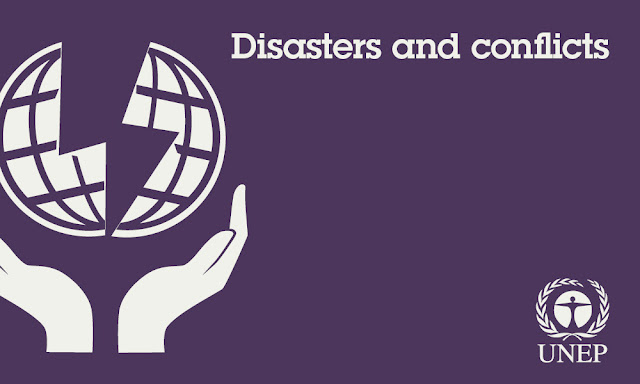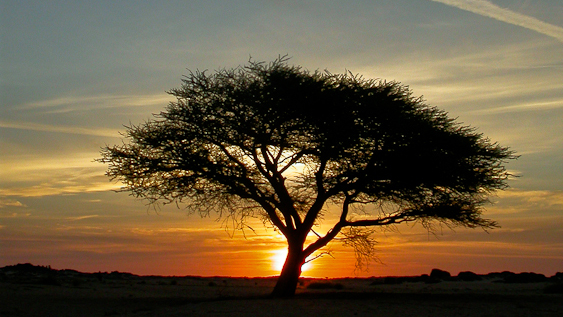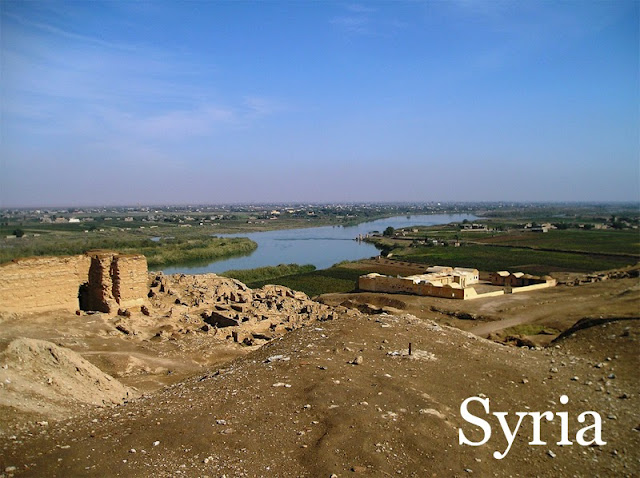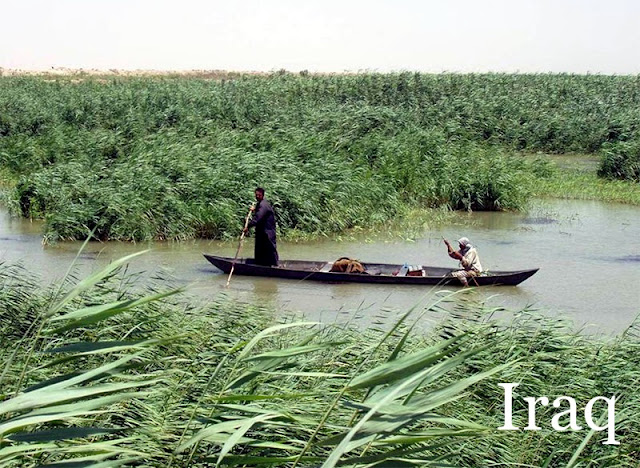-
Teaching Environment and Security at West Point
›February 16, 2011 // By Geoffrey D. Dabelko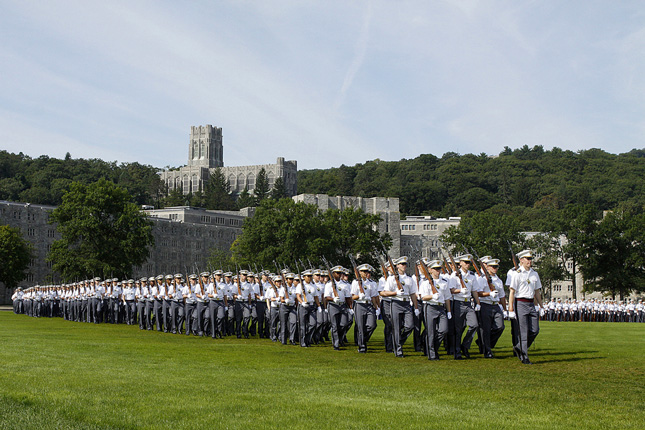
U.S. strategic assessments like the 2010 Quadrennial Defense Review, the 2010 National Security Strategy, and the Director of National Intelligence’s annual threat assessment have placed natural resources, climate change, population, and poverty squarely on the American security agenda. But are these broad statements in doctrine and threat assessments translating into tangible changes, such as new approaches to the education of future military officers? My colleague Sean Peoples and I recently spoke with faculty and cadets at the U.S. Military Academy about how West Point’s Geography and Environmental Engineering Department is integrating these issues directly into their curriculum.
-
Environmental Security at the UN
UNEP/PCDMB Progress Report From Brussels
›January 11, 2011 // By Lauren Herzer RisiAt a November Environmental Security Assessments conference on methodologies and practices, held jointly by ENVSEC and IES outside of Brussels, I had the opportunity to catch up with David Jensen, a policy and planning coordinator in the UN Environment Programme’s (UNEP) Post Conflict and Disaster Management Branch (PCDMB).
Jensen pointed to several upcoming reports coming from UNEP and expressed some relief that the concept of environmental security was finally getting some recognition without having to constantly be “banging on doors.”
PCDMB is a branch of UNEP created to provide five core services to UN member states: post-crisis environmental assessments; post-crisis environmental recovery; environmental cooperation for peacebuilding; disaster risk reduction; and, most recently, humanitarian action and early recovery.
There has been a steady stream of activity flowing from PCDMB and a lot to look forward to this spring:
Finally, it sounds like PCDMB is getting some recognition from within the upper echelons of the UN. Jensen has been asked to brief senior peacebuilding officials, and the Secretary-General’s political advisor called him in to talk about peacekeeping and natural resource management and conflict prevention.- The guidance notes on conflict prevention and natural resources, recently published on the PCDMB website, are draft notes that will be revised following pilot programs in four countries (Jensen particularly noted that there is much work to be done on them still). Ultimately, they hope to identify funding for 100 experts to deploy to countries (at the country’s request) to apply the guidance notes in the field.
- PCDMB has a project of 150 case studies coming out in six volumes in February 2011 on natural resources and peacebuilding.
- The culmination of a three-year UNEP project in Nigeria, which includes a full analysis and remediation plan of 300 oil-contaminated sites in the Ogoniland region of the Niger Delta, is expected to be released in the second quarter of 2011. (Editor’s note: though not finished, the report caught flack last summer over concerns that it will largely exonerate Shell.)
- PCDMB is also partnering with UN’s Department of Peacekeeping Operations and the Department of Field Support to assess options for resource-efficient technologies and practices in peacekeeping camps (the so-called “green helmets“). They will be issuing a policy report on best practices in May 2011.
In an interview with ECSP last fall, Jensen predicted the UN was finally approaching a fundamental tipping point for inclusion of natural resource issues in the broader peacebuilding process, and the kind of interest noted above appears to be proving him right.
In a report this summer, Secretary-General Ban Ki-moon noted the need for inclusion of environmental security in peacekeeping operations and highlighted the particular work of PCDMB in places like Afghanistan, Timor-Leste, and the Sudan.
It’s no surprise then that when Jensen briefed the full Secretariat, he said he was greeted by a packed house.
Image Credit: Arranged from “UNEP and Disasters and Conflicts at a Glance,” courtesy of UNEP. -
Those Who Would Carry the Water
›December 24, 2010 // By Mark NepoThis article will appear as the introduction in the forthcoming Fetzer Institute and Wilson Center publication, Our Shared Future: Environmental Pathways to Peace, based on an event cosponsored at the Wilson Center in January 2009.
It is fitting to say “welcome,” since this timeless greeting originally meant “come to the well.” Let me try to describe the well we are coming to. We are at once trying to gather the best experience and thinking of current environmental practice, to help advance the issue of water as a resource, and to use environmental work around water as a case study for the lessons and challenges of global community engagement. In convening leading practitioners and thinkers in the field of environmental peace-building and focusing on the ever-present issue of water, we hope to surface the strengths of human resources and how they impact the emerging global community.
In truth, the issues that bring us here have been present in the human condition forever. They are spoken to in every tradition. A few stories will help create a context for our time together.
If we turn to the Hindu tradition, we learn that Saraswati is the goddess of knowledge, music, and the arts. Her name means “the one who flows” and legend has it that she was born of the Saraswati River, which is an invisible river that carries the waters that sustain all life. From the earliest times, in many traditions, the waters that sustain all life refer to both natural resources and human and spiritual resources; actual water and the water we have come to know since the beginning of time as wisdom and love.
In Hindu lore, Saraswati’s ageless counterpart on earth is the serpent-demon, Vritrassura, who is driven to hoard all the Earth’s water. And so the endless struggle begins; at least this is one tradition’s beginning. Thankfully, in the Rig-Veda, the sacred collection of Sanskrit hymns, we are given hope as Saraswati – with help from her brother Ganesh, the provider and remover of obstacles, and Indra, the god who connects all things – kills the demon who would hoard the Earth’s water.
But clearly, throughout the ages, those who would carry the water and those who would hoard the water have appeared again and again and again. This is why we are here. Unspoken or not, unaware or not, we are by care and kinship of the lineage that would carry the water.
If we turn to the Haitian tradition, we find a very telling teaching story called The Chief of the Well. This story speaks of a time of drought when the streams are dry and the wells are parched. There is no place to get water. The animals meet to discuss the situation and decide to ask God for help. God creates a well that will have endless water as long as one of the animals serves as caretaker and welcomes all who would come in need. The lizard Mabouya volunteers. But intoxicated with his newfound power, Mabouya becomes a gatekeeper, not a caretaker, and sends everyone in need away. Eventually, God replaces the lizard with the frog who croaks to all, “Come! This is God’s well! The hole in the ground is yours, but the water belongs to God.” And we are left, in each generation, to discover what is ours and what is God’s, and to understand what turns the caretaker in us to the gatekeeper?
If we can accept our role as caretakers of resources that outlive us, then the history of the acequia might be relevant. An acequia (a-sā’kē-e) is a community-operated waterway used for irrigation. It is the name for a sluiceway or gravity chute that flows down a mountainside, providing water for a village. The Spanish word acequia, which means “ditch or canal,” comes from the Arabic al saqiya, which means “water conduit.” The Islamic occupation of Spain, beginning late in the eighth century, brought this technique of irrigation to Spain.
Acequias were then brought to the Americas by the Spanish, only to find their indigenous counterparts already in use. Particularly in the Andes, northern Mexico, and the modern-day American Southwest, acequias exist as the outgrowth of ancient systems created to carry snow runoff or river water to villages and distant fields. Many South American villages have settled around the mouth of an acequia that begins high and out of sight in the crags of a mountain. There, the source-water collects all winter near the top and, in spring, with the thaw, it streams into the village.
In many of these South American villages, as in Peru for example, there is an annual ritual in which an entire village climbs the acequia in early spring to clear the rocks and tree limbs and snake nests that during the winter have blocked the path of water that the village depends on. This ancient pragmatic ritual of clearing the acequia provides a powerful model for how community can care for its natural resources together.
In fact, keeping the acequia clear and flowing is a useful metaphor for interdependence and cooperation. The life of the acequia and our responsibility to keep its path of flow clear represents a cycle of natural and human erosion and cleansing that is intrinsic to life on earth. Therefore, keeping the acequia clear – both the actual acequia and the acequia of humanity – bears learning how to do well.
With all this in mind, I am drawn to lift up one more story. It comes from Éliane Ubalijoro, a professor at McGill University in Montreal, who as a Rwandan is working with the generation there orphaned by the genocide. After the mass killings, those surviving were confined to refugee camps. In this particular settlement, women had to cross a dark field outside of the camp and risk being raped to get water for their children, which they did repeatedly. This difficult situation points to the complex levels of the issues before us; all of which demand our attention.
First, we might consider access to the water itself. With regard to the conservation and preservation of natural resources, we are asked to solve the perennial question: How do you bring the water to those who need it? At this level, a direct solution might be to move the water supply inside the refugee camp.
Under this, however, we might consider access to the human resources. What is blocking the human acequia? With regard to conflict transformation and peace-building, we are compelled to ask: What are the values implicit in this situation by which the refugee camp guards put the water outside of the camp in the first place in order to create the opportunity to rape the women?
This leads to the work of education, the work of clearing the human acequia. So with regard to the development of social equity, we are now compelled to ask: What are the assumptions and traditions in this community that enable them to believe that exploiting women is not only permissible but entitled? How do we clear the human acequia so that wisdom and compassion can flow?
Finally, we might consider the conservation and preservation of human resources. For at the heart of this insidious atrocity is the resilience and courage and love of these women who went into the dark to get water for their children knowing the violation that awaited them. What kind of deep water is this and how can we insure access to this resource?
This story from Rwanda is one more example that shows how natural resources and human resources are inextricably linked. One central question before us is: How do we tend all levels at once? How do we develop multiple strategies? How do we convene and surface the wisdom of all frames?
Part of our inquiry here is to take our turn in trying to understand how natural resources and human resources are so linked. What blocks their access? What lets them flow together and sustain life? How do we understand the water of humanity and the water of the earth and how both kinds of water are shared or not in the world today?
We could say that knowledge flows like water between countries and communities. If this is so, then each of you is such water. We are here to drink from you and people like you, and to understand the currents that run between us and beneath us; to insure the clear flow of natural and human resources into the world; and to keep the global acequia clear; to embody and to further the art and science of carrying the water in all its forms to those who need it.
Mark Nepo is the author of The Book of Awakening as well as the forthcoming As Far As the Heart Can See.
Photo Credit: Adapted from “The Water Carrier,” courtesy of flickr user Portrait Artist – Enzie Shahmiri. -
Tracking the End Game: Sudan’s Comprehensive Peace Agreement
›
The next nine months are critical for Sudan. The 2005 Comprehensive Peace Agreement (CPA) sets January 9, 2011, as the date when southern Sudanese will vote on secession or unity, and the people of disputed Abeyei will vote on whether to be part of North or South Sudan. Between now and July 2011, when the provisions of the CPA come to an end, we could see the birth of the new country of South Sudan—or a return to a North-South war if the referendum is stalled, botched, or disputed. (Few currently expect that a unity vote will create the “New Sudan” envisioned by the late John Garang.)
-
The Tenth Parallel: Dispatches From the Fault Line Between Christianity and Islam
›The latitudinal tenth parallel — located 700 miles above the equator — constitutes a “faith-based fault line” between Islam and Christianity, said Eliza Griswold at the launch of her latest book, The Tenth Parallel: Dispatches from the Fault Line Between Christianity and Islam at the Wilson Center on September 16, 2010. The former Wilson Center public policy scholar traveled more than 9,000 miles to six countries along the line. One quarter of the world’s Muslim population lives north of the line, while one-fourth of the world’s Christian population lives south of it.
Religious Conflict and Environmental Peacemaking
The tenth parallel is vulnerable to intense religious conflicts, exacerbated by the imposition of colonial-era national borders. Griswold collected stories from tribal leaders, presidents, and missionaries that reveal subtle linkages between religious conflict, politics, and environmental change. “Every single religious conflict I saw had a worldly trigger, whether land, oil, or water,” she said, because these groups tend to self-identify along lines of religion, “even over any kind of ethnicity.”
In the town of Abiay, Sudan, Griswold described a fight “over who’s going to get that oil, and how they’re going to divide themselves. Religion comes in as an overlay, because the north pushes the people of the south farther south by saying, ‘Guess what? We need that land, and why? Because our Muslim people need that land for their cattle,’ but underneath that land runs a river of oil.”
But in these origins of conflict Griswold finds an avenue to peace: “Environmental challenges seem to work well in areas of religious conflict” as a neutral meeting ground, she said.
For example, in the Nigerian city Kaduna, where Christians and Muslims have clashed violently, two former mortal enemies and self-avowed fundamentalists work together to deprogram the youth they trained to protect their faith through violence. At the Interfaith Reconciliation Center, Pastor James (who lost an arm to a group of Muslims) and Imam Muhammed Nurayn Ashafa use practical aspects of living to encourage interfaith dialogue. During Griswold’s visit, it was fuel-efficient cookstoves, “because that’s one of the things Christians and Muslims fight about…whether land, water, oil.”
Such concrete examples of environmental peacemaking offer future policy options for mitigating conflicts in other areas. “The tenth parallel is one of the most sensitive environmental zones in the world…so do I think it’s replicable? Absolutely,” said Griswold.
The Changing Demographics of Religion
Today, “four out of five of the world’s one billion Muslims don’t live in the Middle East; they live in Africa and they live in Asia. More than half of them live along the tenth parallel, and about half of the world’s two billion Christians also live along the tenth parallel,” sais Griswold.
She explained that the migration of Islam to Africa stopped along the tenth parallel because of the tsetse flies and the devastating sleeping sickness they carried.
Later, colonial-era European missionaries arrived, many with “the express purpose of stopping Islam from winning Africa, from spreading south of the tenth parallel,” she said. For example, Britain’s division of Sudan restricted Muslims to the north and Christians to the south, where missionaries developed and constructed the southern Sudanese state.
“Many of these places are failed states…and religion has come in largely to fill the gaps,” said Griswold. “The world is breaking down on tribal lines and religion is the largest tribe there is, more so than ethnicity, more so than other global markers.”
Based on population projections, Griswold pointed out that “the center of Christianity, in 2050 will be on the tenth parallel…in Muslim Nigeria.”
Historical Echoes
Historically, aid and development work along the tenth parallel “was not a secular enterprise,” Griswold said, since most of the aid workers were Christian missionaries. “So there is a very long history and a very strong association between the West and Christianity in many, many places,” she pointed out.
This history has long affected American foreign policy and perceptions of the United States abroad. According to Griswold, “foreign policy [has] come to reflect the interests of selective groups of Americans.” For that reason, “we really need to call for caution in how we allow ourselves to be represented and in the diversity of voices that get out there,” she advised.
For example, the evangelical preacher Franklin Graham met with Bashir in 2003 to ask for the right to proselytize in northern Sudan. In exchange, Bashir hoped to avoid being added to “the American ‘hit list’ after Afghanistan and Iraq,” reported Griswold. Graham told her that in response he took out a George W. Bush re-election pin and said, “Mr. President, I understand you’ll be talking to my president later today. Why don’t you tell him you’re his first voter here in the Sudan?”
In the same vein, Griswold cautioned against perpetuating American ignorance of Muslim culture:We, especially in America, are extremely aware of this fight over who speaks for God. Because I think, when we see what’s happening on the steps of the Lincoln Memorial or at Ground Zero, we’re looking at a struggle inside of a broader Christian context between Franklin Graham and Barack Obama over who a true Christian is. And Islam becomes the easiest bogeyman. The quickest way to whip up fear in followers is to create a shared enemy.
“The single most important finding of the book,” Griswold concluded, “was that the clashes within religions, the clashes between Christians and Christians, Muslims and Muslims, over who has the right to speak for God, are the most important and most overlooked religious conflicts going on today.”
Shawna Cuan is an intern with the Environmental Change and Security Program. Edited by Meaghan Parker.
Photo Credit: “Farmer Harvests Sorghum Seeds in Sudan,” courtesy of flickr user United Nations Photo. -
Syria: Beyond the Euphrates
›September 28, 2010 // By Russell SticklorThe Middle East is home to some of the fastest growing, most resource-scarce, and conflict-affected countries in the world. New Security Beat’s “Middle East at the Crossroads” series takes a look at the most challenging population, health, environment, and security issues facing the region.
Across the Middle East, sustained population growth has strained government institutions, natural resources, and the social fabric of entire societies. In Syria, these problems have been particularly acute.
With a total fertility rate of 3.3 children per woman and a population growth rate of 2.45 percent, the country is slated to swell from 22.5 million people to 28.6 million by 2025, and upward to 36.9 million by mid-century, according to the Population Reference Bureau.
“We have a population problem, no question,” acknowledged Syrian economist and former World Bank official Nabil Sukkar in a recent interview with Reuters. “Unless we cope with it, it could be a burden to our development.”
One of the biggest population problems threatening to derail Syria’s continued development is the scarcity of clean fresh water, which has troubling implications for both the security of the country and the region, since Syria shares key transboundary waterways, like the Euphrates River, with neighbors Iraq and Turkey.
As Syria grows more crowded, can Damascus find a way to encourage more efficient management and sustainable use of the country’s water? Or is greater conflict over the resource at home and in the neighborhood inevitable?
From Water Rich to Water Scarce
Historically, Syria has enjoyed plentiful groundwater resources and water from a number of rivers. Even today, Syria typically receives more annual precipitation per capita than seven other Arab nations, placing Syria 13th on a list of 20 released by the UN Development Programme’s 2009 Arab Human Development Report.
However, rapid demographic change, coupled with a series of severe droughts since 2006, has made life considerably more difficult for many Syrians. According to the UN, erratic rainfall in recent years has reduced Syria’s surface water supplies, inducing crop failures and livestock losses, and nudging millions — especially those involved in subsistence farming — into “extreme poverty.” In particular, wheat production has been hit hard, weakening the country’s food security and pushing farmers to migrate to urban centers.
Heading Underground
To cope with the drought, large- and small-scale farmers alike have increased their reliance on groundwater. But in a country where 90 percent of all water withdrawals are used for agriculture, Syria’s efforts are placing a huge strain on its aquifer health. And despite appearances, it’s not just the drought: Syria’s groundwater depletion problems have spanned decades, mirroring its population growth.
According to Syria’s National Agricultural Policy Center (NAPC), the number of wells tapping aquifers nationwide is thought to have swelled from just over 135,000 in 1999 to more than 213,000 in 2007. The rampant pumping — much of it illegal — has caused groundwater levels to plummet in many parts of the country, and raised significant concerns about the water quality in remaining aquifer stocks.
And demand continues to rise: NAPC reports that the amount of land irrigated by groundwater soared from roughly 650,000 hectares in 1985 to 1.4 million hectares in 2005, a trend that has only accelerated in the face of recent rainfall shortages.
Drawing down aquifers is worrisome as long as withdrawals outpace natural recharge. Some, known as “fossil aquifers,” lack natural inputs or outlets and will never refill — once drained, these aquifers are gone for good.
Avoiding the Hard Choices
For decades, Damascus did little to acknowledge or address the country’s growing problem of aquifer overuse. Government officials shied away from implementing robust policies that would have metered, taxed, or even simply monitored groundwater usage. In lieu of encouraging water-use conservation in the agricultural sector, Syria’s water managers instead focused on manipulating supply, by constructing dams or proposing plans to shuttle water between river basins. In doing so, they largely avoided imposing water austerity measures that almost certainly would have proven politically unpopular.
Belatedly, some efforts to mitigate Syria’s water issues are now underway. The country’s 2005 water-use code called for the licensing of all the country’s wells, threatening fines or prison terms for those caught illegally pumping groundwater. In 2008, Damascus took its campaign one step further, eliminating diesel subsidies that once facilitated groundwater removal.
But while these efforts have had some positive effect on groundwater-use trends nationwide, they could undermine stability in the short term. Illegal wells facilitate crop growth in many areas and help employ thousands in the agricultural sector, so shutting them down could heighten regional unemployment, and further weaken the country’s food security.
There Goes the Neighborhood?
With the future of Syria’s groundwater uncertain, there has been speculation that these internal water tensions might increase competition with neighboring countries for transboundary surface waters. The two countries most inextricably linked to Syria’s water crunch are Iraq and Turkey, who share the Euphrates with Syria.
Syria pulls roughly 85 percent of its water from the Euphrates, making the river a vital strategic resource. Yet water availability has historically been subject to the whims of Turkey, which controls the Euphrates’ headwaters.
Meanwhile, Iraq, which lies downstream of Syria, is also heavily dependant on the river. Understandably, as all three countries have seen their populations grow in recent decades, so too have tensions over controlling and sharing the Euphrates’ flow.
Despite Turkey’s long-standing resistance to international water-sharing pacts and penchant for large-scale hydroelectric projects, a new round of water diplomacy may help ease future tensions over the river. A recently created joint institute — backed by Iraq, Syria, and Turkey — is designed to provide a forum for the three countries to share data and policy ideas. Academics and water experts from the three countries will collaborate on efficient management, share best practices, and create a comprehensive map of the region’s water supplies.
The institute may be only a small step, but its emphasis on transparency is undoubtedly a move in the right direction. For Syria — sandwiched between two much larger countries — better communication with its neighbors is not only smart, but necessary to avoid conflict. But that won’t solve the country’s serious water scarcity problem. Leaders in Damascus should also continue to encourage conservation and more efficient use of water to stretch supplies to meet the needs of their growing population.
Sources: BBC, Global Arab Network, IRIN, Mideastnews.com, National Agricultural Policy Centre (Syria), Population Reference Bureau, Reuters, Syria Ministry of Agriculture, Syria Today
Photo Credit: “Euphrates and the Dig House Dura Europos,” courtesy of flickr user Verity Cridland. -
Environmental Disaster or Impetus for Cooperation?
Iraq: Steve Lonergan on the Southern Marshes
›September 21, 2010 // By Schuyler NullIraq’s Southern Marshes, once the Middle East’s largest and most ecologically diverse wetlands, have survived the Iran-Iraq war, systematic drainage by Saddam Hussein, American invasion, and record-breaking drought. Today, however, the prospects for survival are dimming, as water consumption across the region continues to increase and security remains unsettled. Despite these challenges, the marshes’ location along the Iranian border and their reliance on flow from Turkey upstream offers unique potential for environmental peacemaking in this troubled region.
-
Saleem Ali at TEDxUVM on Environmental Peacemaking
›“The use of the term ‘peace’ is in many circles still considered taboo, because immediately people think you are talking about something that is utopian,” said University of Vermont Professor Saleem Ali at a recent TEDx event on sustainability. “But I’m here to tell you that peace is pragmatic. Peace is possible.”
Ali points out the value of peace to every sector of society and, using an example from Ecuador and Peru, argues for the utility of the environment as a peacemaker. Other longstanding conflict areas like Cyprus, Iraq, Israel, and Korea are also ripe for environmental peacebuilding efforts, he says.
Professor Ali has written for The New Security Beat before on the strengths and weaknesses of viewing conservation and sustainability efforts through a strictly security lens. He points out that environmentalists must tread a fine line when assigning causality between the environment and conflict, but even when natural resources or climate are not central to a conflict, environmental peacebuilding can still play a role in creating shared ground (sometimes literally) between combatants.
“Treasures of the Earth,” Ali’s latest book, examines the thorny subject of how best to balance resource extraction in developing countries with long-term sustainability. Recent examples, such as Angola and Liberia’s blood diamonds, the DRC’s conflict minerals, and concerns over Afghanistan’s potential reserves have shown the difficulty in striking that balance.
“Ultimately, conflict trumps everything else” in terms of what we ought to be concerned with, Ali argues, and therefore, anyone, no matter their profession or capacity, should keep the pursuit of peace in mind – and all options on the table – when making decisions that affect others.
Showing posts from category environmental peacemaking.


